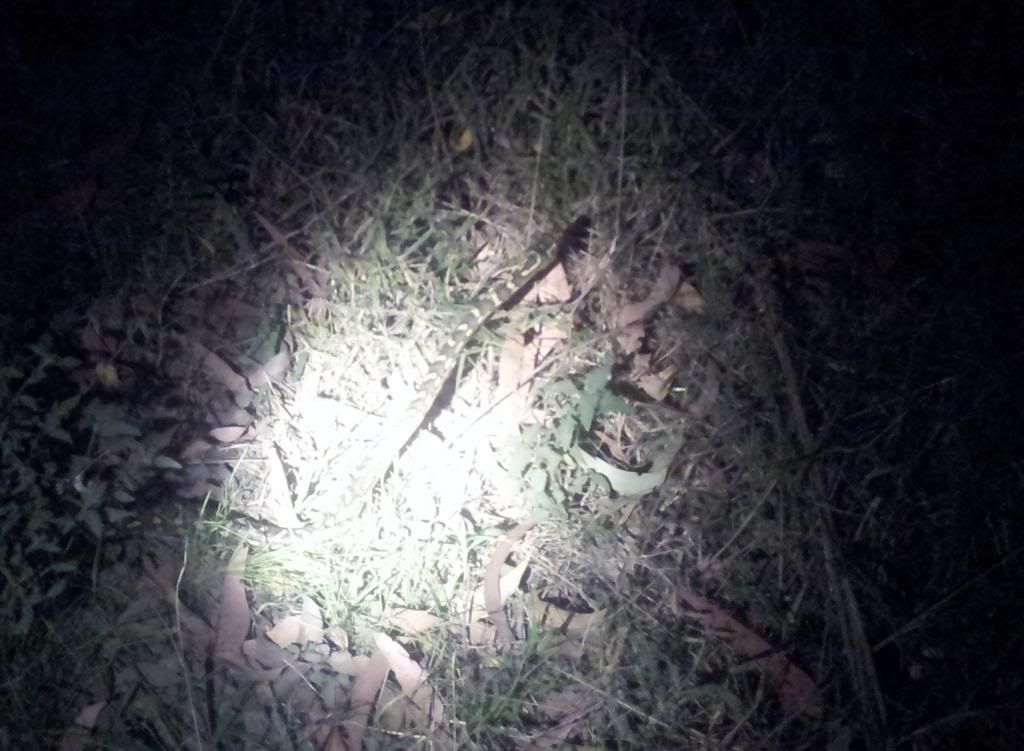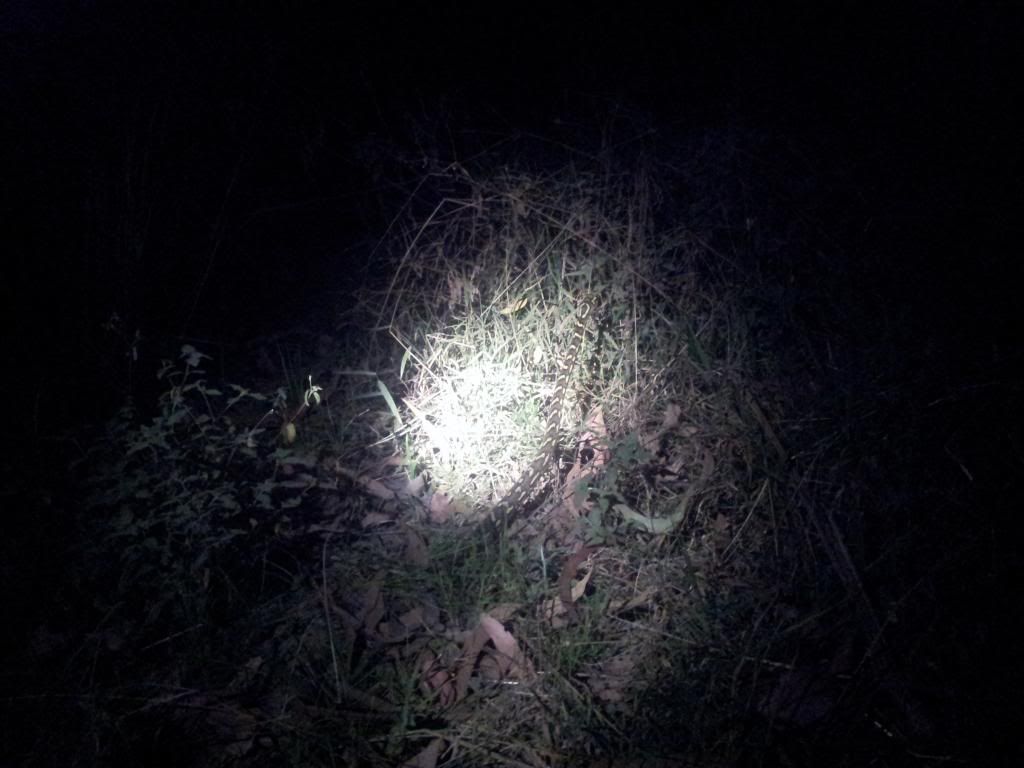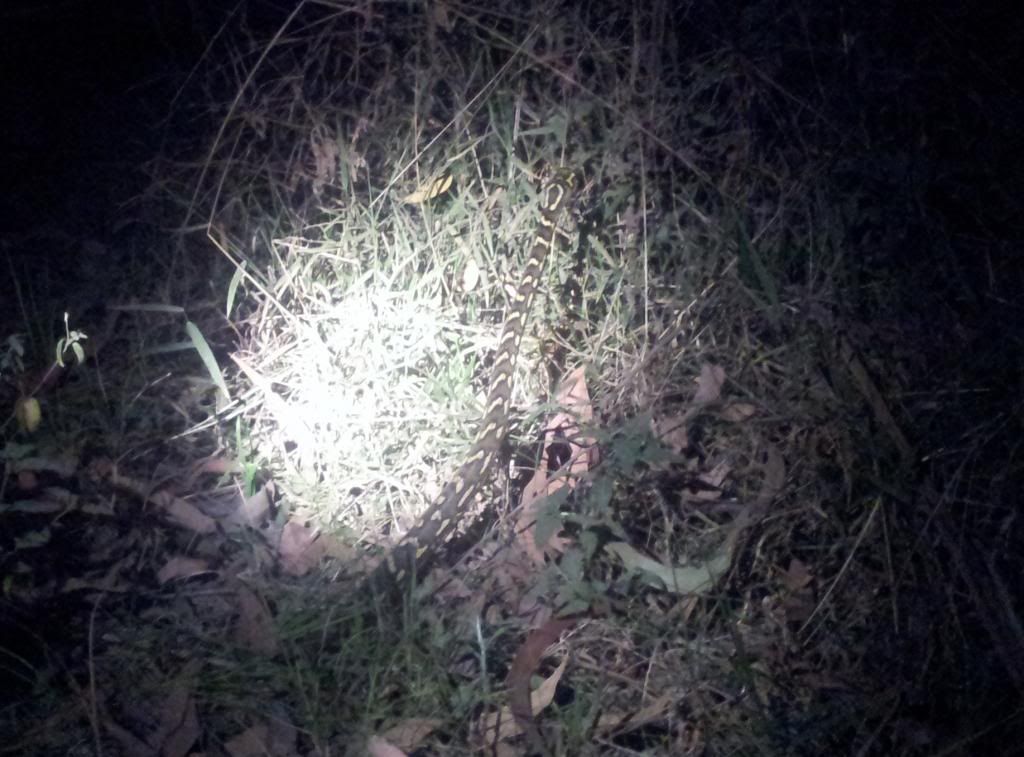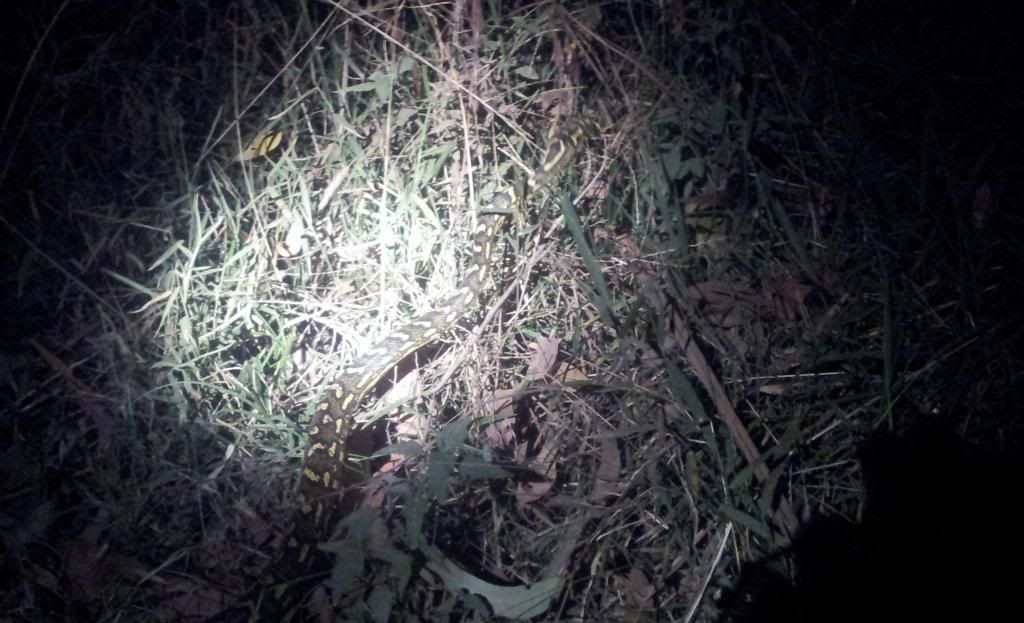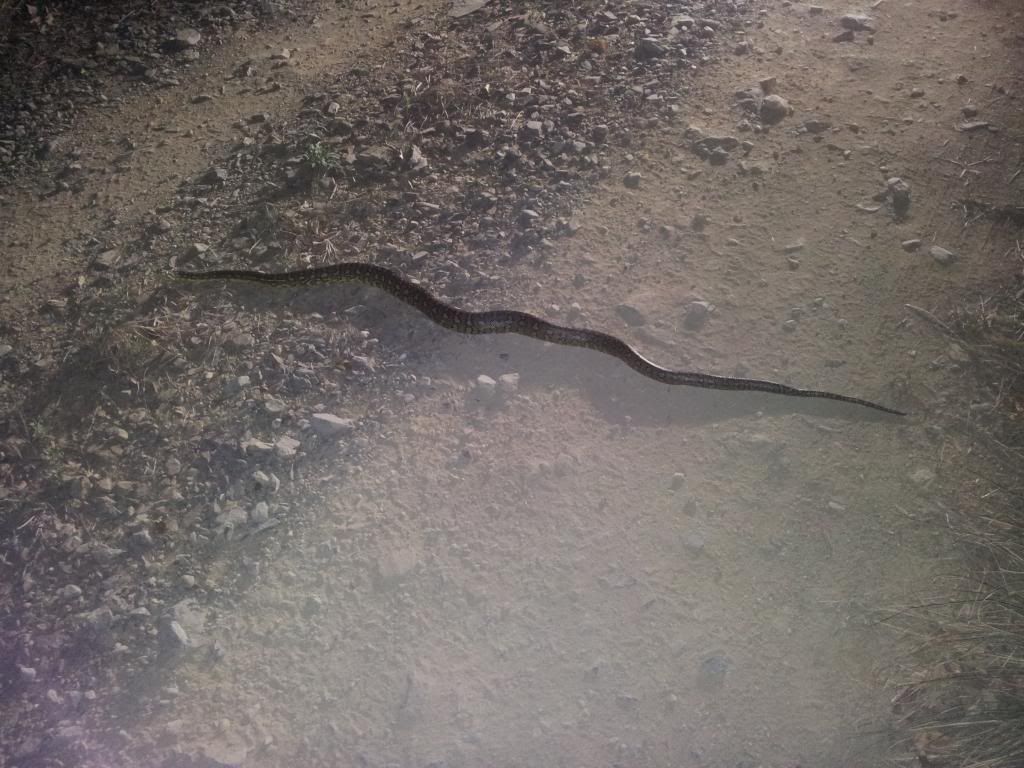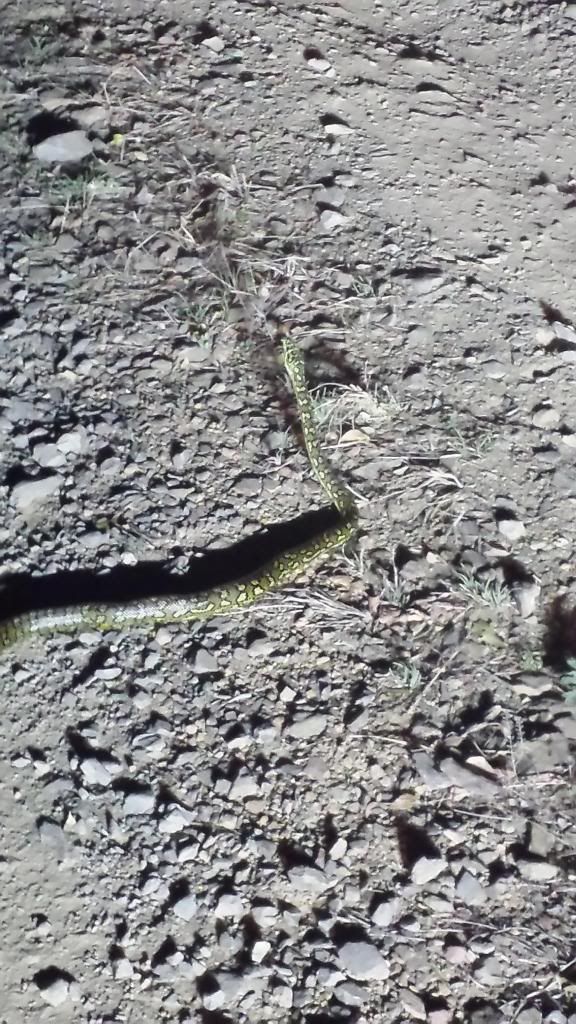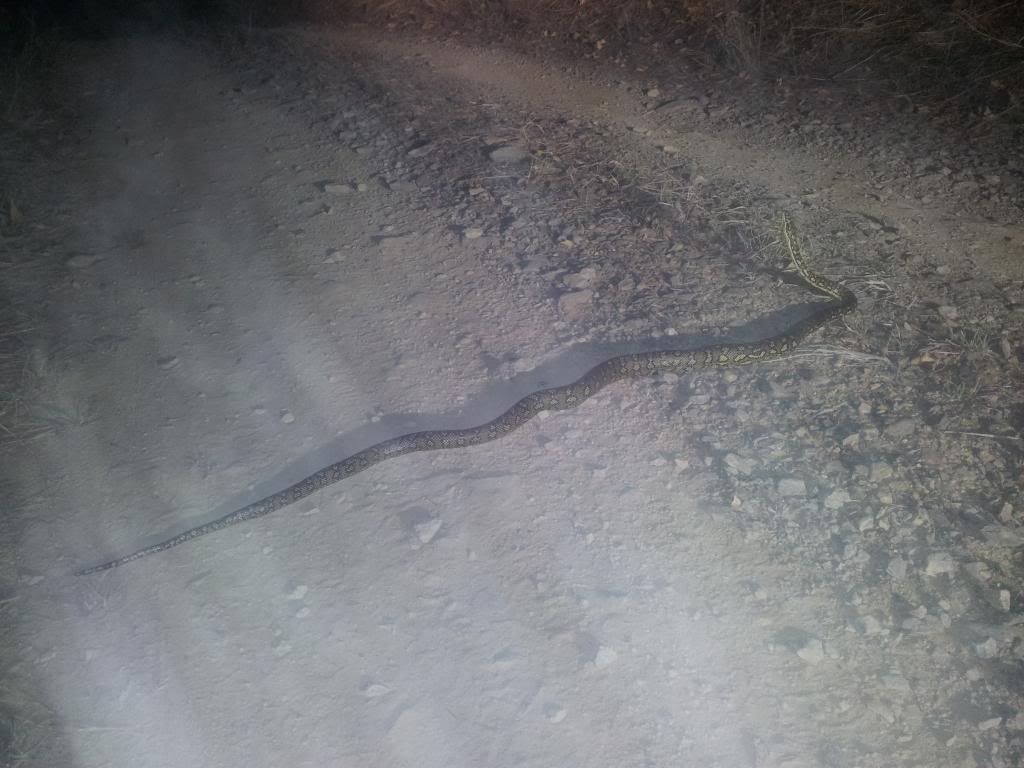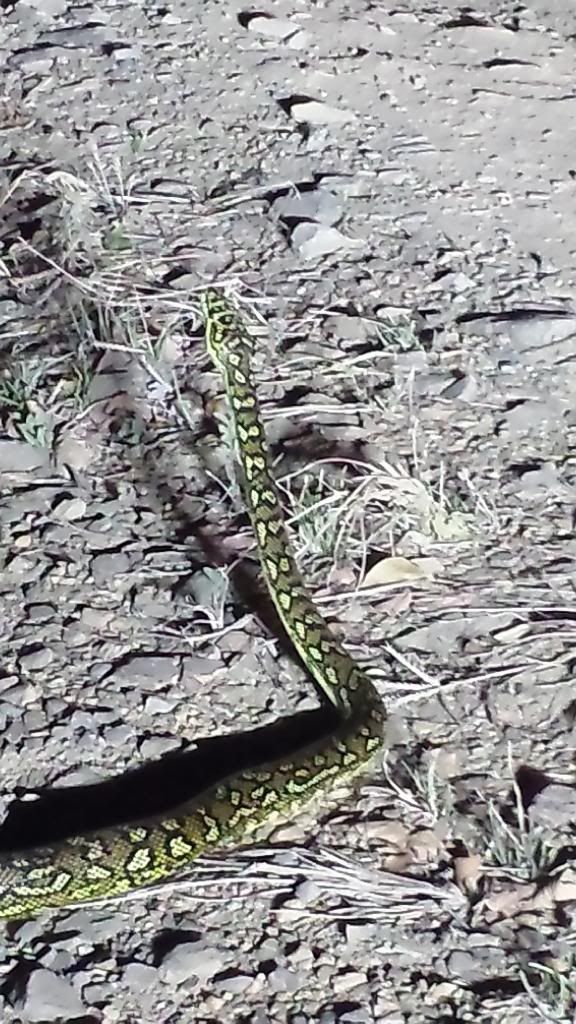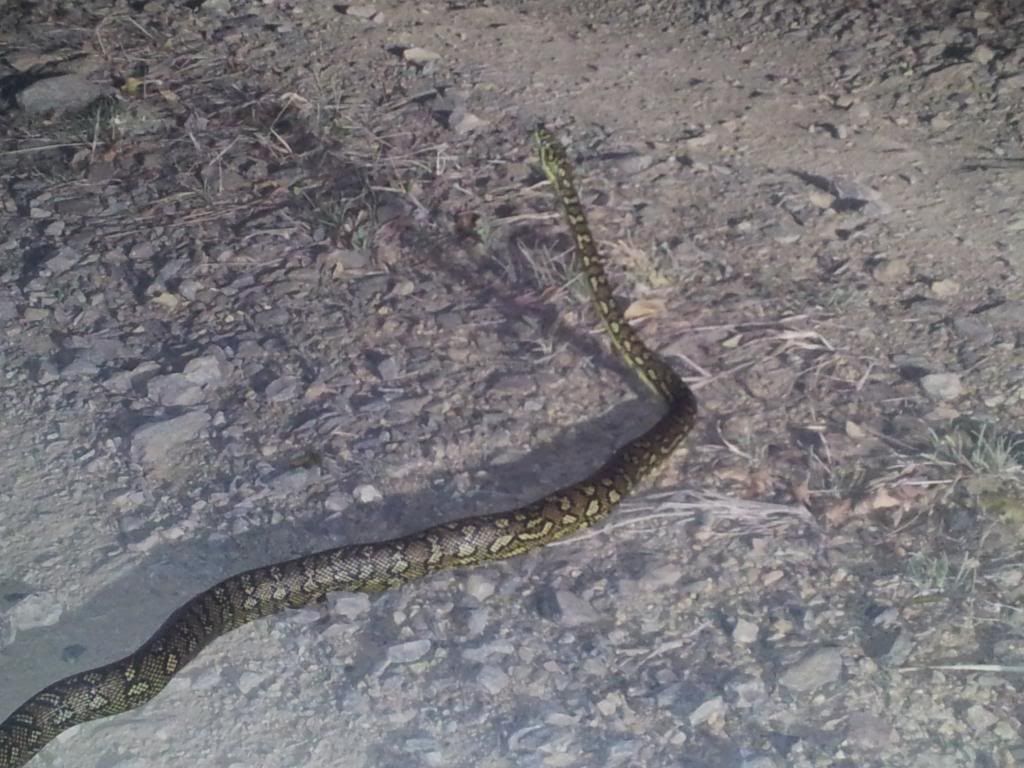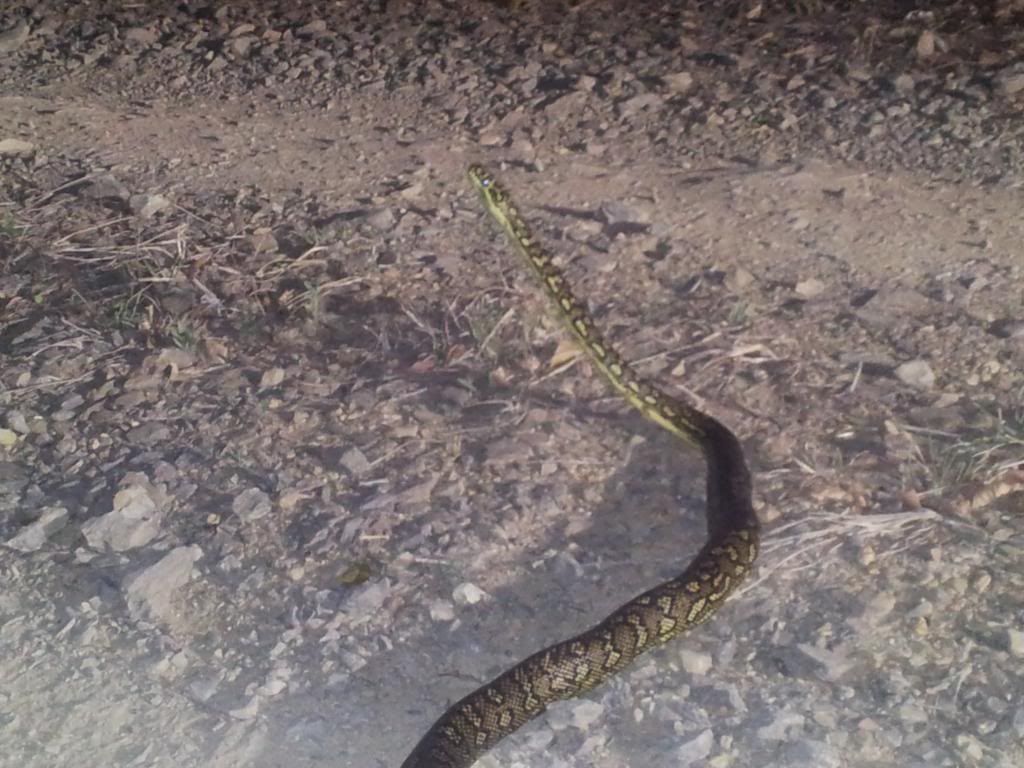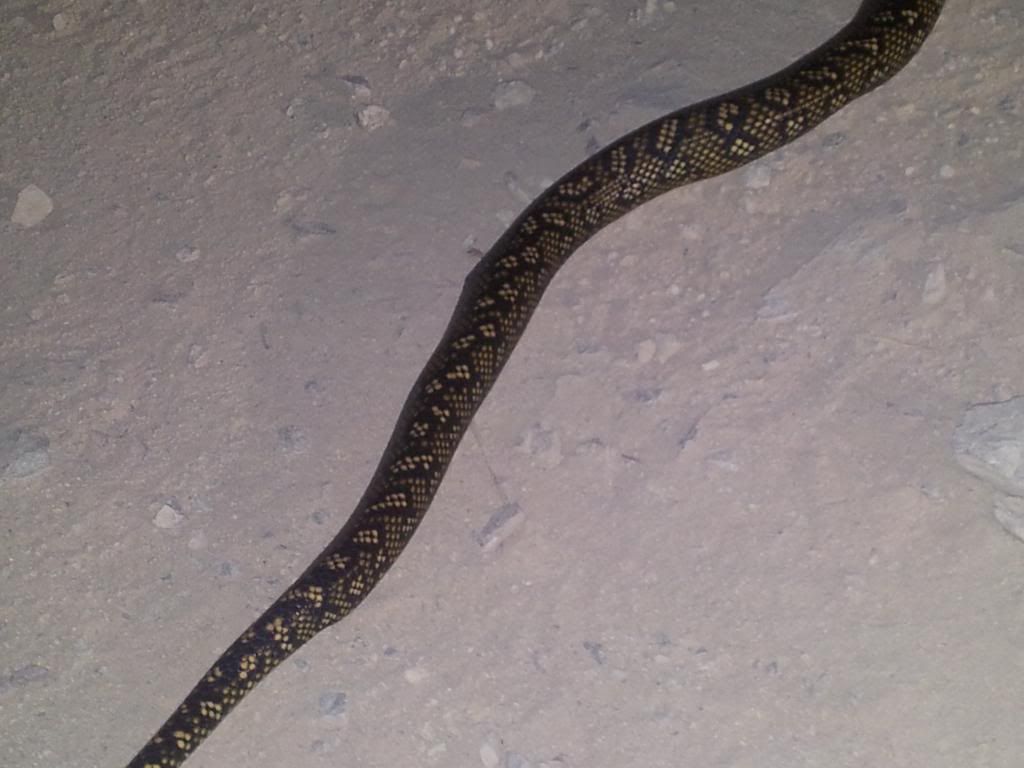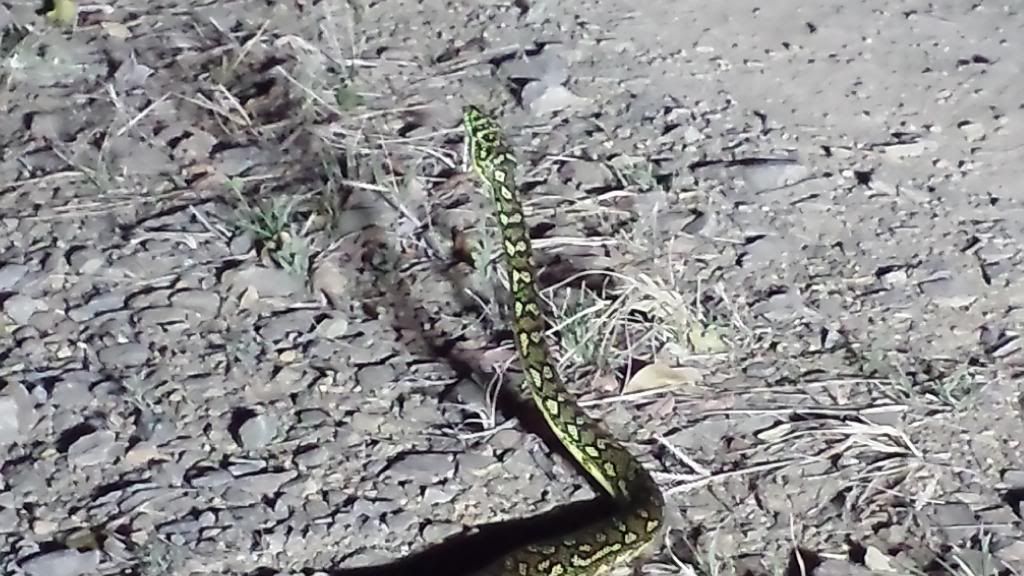I once saw a intergrade at Sawtell that was rescued from a pre school. It looked almost identical to the Central Coast high yellow Diamonds that I have seen in the thousands, however, looking at it closely you could still see a few bits of carpet in the patterning. Less experienced herpers would have sworn it was a pure Diamond, but, as Jamie stated, it was still a intergrade that more closely resembled a Diamond.
You are using an out of date browser. It may not display this or other websites correctly.
You should upgrade or use an alternative browser.
You should upgrade or use an alternative browser.
Diamond Python Range?
- Thread starter Gruni
- Start date

Help Support Aussie Pythons & Snakes Forum:
This site may earn a commission from merchant affiliate
links, including eBay, Amazon, and others.
- Status
- Not open for further replies.
cement
Very Well-Known Member
Plus the fact that coastals can live in the wild here on the central coast, makes it even harder. I know of pure diamonds being bred in Mareeba, so the different subspecies can live in a different area if they find a spot with the right conditions.
For me, I have seen stripes occurring in carpets on the south side of Port Stephens. Yet further south, from at least the northern borders of the Central Coast striping does not occur. So in my eyes pure diamonds don't have the ability to stripe like integrades and coastals do. The same goes for solid banding.
So I call the start of the border for integrade/diamond Port Stephens. In this area and also just a bit further nth I know where there are breeding haunts of carpets at Treachery and Yegun and you can see snakes that look just like diamonds (not surprising).
Even line bred diamonds for reduced pattern, in my experience won't stripe. But, This is just my opinion and further breedings over the coming years may prove different,
Thomas, yours shows a lot of integrade features, Gruni, yours is integrade.(because of the known location and it is bush not suburbia).
There are now diamond crosses turning up in the wild here on the central coast in suburbia. Escaped coastals in and around the suburbs seem to be the reason.
For me, I have seen stripes occurring in carpets on the south side of Port Stephens. Yet further south, from at least the northern borders of the Central Coast striping does not occur. So in my eyes pure diamonds don't have the ability to stripe like integrades and coastals do. The same goes for solid banding.
So I call the start of the border for integrade/diamond Port Stephens. In this area and also just a bit further nth I know where there are breeding haunts of carpets at Treachery and Yegun and you can see snakes that look just like diamonds (not surprising).
Even line bred diamonds for reduced pattern, in my experience won't stripe. But, This is just my opinion and further breedings over the coming years may prove different,
Thomas, yours shows a lot of integrade features, Gruni, yours is integrade.(because of the known location and it is bush not suburbia).
There are now diamond crosses turning up in the wild here on the central coast in suburbia. Escaped coastals in and around the suburbs seem to be the reason.
Some pics i had to photograph from pics because i havent scanner, gives an idea of variation,the drab one was from near willwarrin as was one of the bright golds ,the other bright gold was from about 2 ks SW of Kempsey.
N
Norm
Guest
I love a good intergrade thread!
thomasssss
Very Well-Known Member
- Joined
- Sep 14, 2011
- Messages
- 2,381
- Reaction score
- 0
nice find gruni, the one on the road is actually very similar to some of the adults i find down here , is it just the last pic or did it have more of a greeny yellow rather than a nice light yellow ?
Great discussion guys with some excellent contributions. 8)
Gruni, both of those specimens look like Morelia spilota natural intergrades* to me, although one appears to be more M. s. mcdowelli like and the other more like the nominate subspecies M. s. spilota. The term Diamond Python is used too loosely in my opinion with many intergrades being labelled as such.
In my experience both in the field and by examining museum collections, the range of the Diamond Python is not at all a straight latitudinal one (at least in the north of their range). On the coast where the climate is milder, both M. s. mcdowelli or 'Coastals' and 'intergrades' penetrate further south, down to about the Central Coast. Whereas quite pure looking Diamond Pythons can be found at higher latitudes further inland along the Great Dividing Range e.g Mount Royal, where I've seen classic Diamonds.
There's such an enormous range of colours and patterns in Morelia spilota that it's almost incredible that it's considered the same species. The phenotype expressed locally seems to have a lot to do with local conditions, whether it be vegetation type (like rainforest) or cold spots e.g high altitude, where predictably darker specimens predominate. There are also exceptions to the rule and through breeding Diamonds I've seen first hand that the range of phenotypes, even within a single clutch is quite surprising. I'm sure that this allows the best suited individuals in any given population to survive ahead of their less well suited siblings. Once again there are occasional exceptions to this trend with the odd specimen surviving to adulthood and going on to breed. The more one looks at this species the more complex it becomes.
* perhaps for want of a better term, as Sdaji convincingly argues.
Gruni, both of those specimens look like Morelia spilota natural intergrades* to me, although one appears to be more M. s. mcdowelli like and the other more like the nominate subspecies M. s. spilota. The term Diamond Python is used too loosely in my opinion with many intergrades being labelled as such.
In my experience both in the field and by examining museum collections, the range of the Diamond Python is not at all a straight latitudinal one (at least in the north of their range). On the coast where the climate is milder, both M. s. mcdowelli or 'Coastals' and 'intergrades' penetrate further south, down to about the Central Coast. Whereas quite pure looking Diamond Pythons can be found at higher latitudes further inland along the Great Dividing Range e.g Mount Royal, where I've seen classic Diamonds.
There's such an enormous range of colours and patterns in Morelia spilota that it's almost incredible that it's considered the same species. The phenotype expressed locally seems to have a lot to do with local conditions, whether it be vegetation type (like rainforest) or cold spots e.g high altitude, where predictably darker specimens predominate. There are also exceptions to the rule and through breeding Diamonds I've seen first hand that the range of phenotypes, even within a single clutch is quite surprising. I'm sure that this allows the best suited individuals in any given population to survive ahead of their less well suited siblings. Once again there are occasional exceptions to this trend with the odd specimen surviving to adulthood and going on to breed. The more one looks at this species the more complex it becomes.
* perhaps for want of a better term, as Sdaji convincingly argues.
I love a good intergrade thread!
Yeh those i posted are intergrades ,i posted because people find them interesting
The natural range north for diamonds is just a little further than newcastle.
andynic07
Very Well-Known Member
Even there is great differences in pattern in diamond pythons found at the northern end of the range to the ones found at the southern end of the range.Great discussion guys with some excellent contributions. 8)
Gruni, both of those specimens look like Morelia spilota natural intergrades* to me, although one appears to be more M. s. mcdowelli like and the other more like the nominate subspecies M. s. spilota. The term Diamond Python is used too loosely in my opinion with many intergrades being labelled as such.
In my experience both in the field and by examining museum collections, the range of the Diamond Python is not at all a straight latitudinal one (at least in the north of their range). On the coast where the climate is milder, both M. s. mcdowelli or 'Coastals' and 'intergrades' penetrate further south, down to about the Central Coast. Whereas quite pure looking Diamond Pythons can be found at higher latitudes further inland along the Great Dividing Range e.g Mount Royal, where I've seen classic Diamonds.
There's such an enormous range of colours and patterns in Morelia spilota that it's almost incredible that it's considered the same species. The phenotype expressed locally seems to have a lot to do with local conditions, whether it be vegetation type (like rainforest) or cold spots e.g high altitude, where predictably darker specimens predominate. There are also exceptions to the rule and through breeding Diamonds I've seen first hand that the range of phenotypes, even within a single clutch is quite surprising. I'm sure that this allows the best suited individuals in any given population to survive ahead of their less well suited siblings. Once again there are occasional exceptions to this trend with the odd specimen surviving to adulthood and going on to breed. The more one looks at this species the more complex it becomes.
* perhaps for want of a better term, as Sdaji convincingly argues.
As I said I knew the second snake was an intergrade but it was such a stunner and people seem to get snobby about owning one instead of a pure diamond that sort of led me to doing this thread. I'm surprised you call the first one an intergrade Bushman, I took it to just be a very nice Mcdowelli, unfortunately the colours don't come out at all in the photos.
Thomas as far as the colour of the second snake, the intense light from my Cree LED lightbar wash out the colour in some of the shots. The snake was actually a really vivid yellowy green, but definitely not the 'high yellow' seen in the other diamonds thread.
Thomas as far as the colour of the second snake, the intense light from my Cree LED lightbar wash out the colour in some of the shots. The snake was actually a really vivid yellowy green, but definitely not the 'high yellow' seen in the other diamonds thread.
N
Norm
Guest
Yeh those i posted are intergrades ,i posted because people find them interesting
The natural range north for diamonds is just a little further than newcastle.
Yeah Zulu, I mean that seriously, I love intergrade threads and there's some nice ones in your pics.
Gruni I agree with you, intergrades can be stunning snakes. I'm very fond of them, in fact I have more intergrades than pure diamonds. I have two very similar to the second one you found, very high yellowy green. But these originate from Fern Bay just north across the harbour from Newcastle.
thomasssss
Very Well-Known Member
- Joined
- Sep 14, 2011
- Messages
- 2,381
- Reaction score
- 0
yea sounding like it had a very similar colour to what i find down here ( had to ask but as i know photos wash out colour especially when flash has to be used ) ive got an old pic of one we caught in my backyard when i was a teen that was very similar , ill try to hunt it down but it will have to be a pic of a picThomas as far as the colour of the second snake, the intense light from my Cree LED lightbar wash out the colour in some of the shots. The snake was actually a really vivid yellowy green, but definitely not the 'high yellow' seen in the other diamonds thread.
Norm > Yeah Zulu, I mean that seriously, I love intergrade threads and there's some nice ones in your pics.
Some nice ones for sure ,onley other areas ive seen quite a few was chichester state forest and the dam road ,looked similar to those from myall lakes in many respects.
Some nice ones for sure ,onley other areas ive seen quite a few was chichester state forest and the dam road ,looked similar to those from myall lakes in many respects.
chimerapro
Active Member
Qld intergrade
 Here's a Toowoomba Qld intergrade. The "term" intergrade can be given to any animal with intermediate appearance. I think the term is used in the wrong context when referring to animals from mid north coast of NSW a better name/term would be moist forest carpets as they are not diamonds or a natural cross of two subspecies. Gruni the 2 snakes you saw were very nice Rainforest coastal carpets
Here's a Toowoomba Qld intergrade. The "term" intergrade can be given to any animal with intermediate appearance. I think the term is used in the wrong context when referring to animals from mid north coast of NSW a better name/term would be moist forest carpets as they are not diamonds or a natural cross of two subspecies. Gruni the 2 snakes you saw were very nice Rainforest coastal carpets 
- - - Updated - - -

 Here's a Toowoomba Qld intergrade. The "term" intergrade can be given to any animal with intermediate appearance. I think the term is used in the wrong context when referring to animals from mid north coast of NSW a better name/term would be moist forest carpets as they are not diamonds or a natural cross of two subspecies. Gruni the 2 snakes you saw were very nice Rainforest coastal carpets
Here's a Toowoomba Qld intergrade. The "term" intergrade can be given to any animal with intermediate appearance. I think the term is used in the wrong context when referring to animals from mid north coast of NSW a better name/term would be moist forest carpets as they are not diamonds or a natural cross of two subspecies. Gruni the 2 snakes you saw were very nice Rainforest coastal carpets - - - Updated - - -

RedFox
Very Well-Known Member
I personally think that the diamond coastal intergrades are some of the prettiest Morelia spilota. So much variety in both colour and pattern.
Since the population of Carpet Pythons is (and by all accounts, DNA and otherwise, we can assume always has been) continuous, with gene flow along the east coast from Victoria to Cape York, how is any area more pure than any other area? Why is a Sydney Carpet ('Diamond') not an intergrade between a Victorian Carpet ('Diamond') and a Gosford Carpet ('Diamond')?
Why are the 'Moist Forest Carpets' ('intergrades') like the stunning Kempsey animals not pure, while Brisbane Carpets are intergrades between those and Prosperpines?
Sydney Carpets are just as much intergrades as 'intergrades'. Intergrades are just as pure as a Sydney 'Diamond'.
How can it make sense to call something at the northern end of the supposed 'pure Diamond' range (a bit north of Newcastle, depending on who you ask) a 'pure' Diamond when they are clearly intermediate between what you find in Sydney and what you find in the 'middle of the intergrade zone'?
Perhaps people are comfortable calling something a 'pure diamond' if it has spots/'rosettes' rather than stripes and blotches, but of course that's just one of many visual traits they have, and there are exceptions deep in the 'pure Diamond' zone (though I've never come across an exception deep in the so-called 'pure carpet' zone. Then again, Diamonds always have at least a little bit of lateral striping, so even that arbitrary diagnostic tool breaks down.
At any point along the east coast (with some exceptions in north QLD where things get a bit funny in some places), every population of Carpet Python is quite variable, and generally intermediate between the Carpets north and south of that area. The Carpet Python populations along that range are not more or less pure. If we had established a big colony at, say, Kempsey rather than Botany Bay and Sydney was further north, with Brisbane still where it is, the original Carpets collected would have been from Kempsey rather than Sydney and they would have been the type we first named, and described. If Brisbane was where Proserpine is, we'd have a very different concept of what typical 'Coastal Carpets' look like (and because that's where the big population was, that's where most of the captive stock would have originated).
I think people are still stuck in the myth that there were once 'pure Diamonds' and 'Pure Coastal Carpets' and nothing in between, then at some point they started interbreeding to make 'intergrades'. If that was the case they would be hybrids, but they're not. This is just not the way it happened (and that's one thing the mtDNA does indicate to us). Things make a lot more sense and are far easier to understand once you realise that it's all one big continuous population and always has been. Imagine it as one big spectrum with white at the NSW/Vic border and black at the tip of Cape York, a gradual grey scale in between, and people drawing random lines along the coast trying to split up various areas (with animals and their genes flowing all along, completely ignoring any lines we might decide to draw).
I'm simplifying a little, but that's the basic way it works, not the 'there were once two types which later made hybrids' myth.
Why are the 'Moist Forest Carpets' ('intergrades') like the stunning Kempsey animals not pure, while Brisbane Carpets are intergrades between those and Prosperpines?
Sydney Carpets are just as much intergrades as 'intergrades'. Intergrades are just as pure as a Sydney 'Diamond'.
How can it make sense to call something at the northern end of the supposed 'pure Diamond' range (a bit north of Newcastle, depending on who you ask) a 'pure' Diamond when they are clearly intermediate between what you find in Sydney and what you find in the 'middle of the intergrade zone'?
Perhaps people are comfortable calling something a 'pure diamond' if it has spots/'rosettes' rather than stripes and blotches, but of course that's just one of many visual traits they have, and there are exceptions deep in the 'pure Diamond' zone (though I've never come across an exception deep in the so-called 'pure carpet' zone. Then again, Diamonds always have at least a little bit of lateral striping, so even that arbitrary diagnostic tool breaks down.
At any point along the east coast (with some exceptions in north QLD where things get a bit funny in some places), every population of Carpet Python is quite variable, and generally intermediate between the Carpets north and south of that area. The Carpet Python populations along that range are not more or less pure. If we had established a big colony at, say, Kempsey rather than Botany Bay and Sydney was further north, with Brisbane still where it is, the original Carpets collected would have been from Kempsey rather than Sydney and they would have been the type we first named, and described. If Brisbane was where Proserpine is, we'd have a very different concept of what typical 'Coastal Carpets' look like (and because that's where the big population was, that's where most of the captive stock would have originated).
I think people are still stuck in the myth that there were once 'pure Diamonds' and 'Pure Coastal Carpets' and nothing in between, then at some point they started interbreeding to make 'intergrades'. If that was the case they would be hybrids, but they're not. This is just not the way it happened (and that's one thing the mtDNA does indicate to us). Things make a lot more sense and are far easier to understand once you realise that it's all one big continuous population and always has been. Imagine it as one big spectrum with white at the NSW/Vic border and black at the tip of Cape York, a gradual grey scale in between, and people drawing random lines along the coast trying to split up various areas (with animals and their genes flowing all along, completely ignoring any lines we might decide to draw).
I'm simplifying a little, but that's the basic way it works, not the 'there were once two types which later made hybrids' myth.
- Status
- Not open for further replies.
Similar threads
- Replies
- 1
- Views
- 1K
- Replies
- 1
- Views
- 2K
- Replies
- 2
- Views
- 1K



